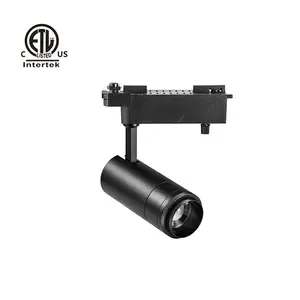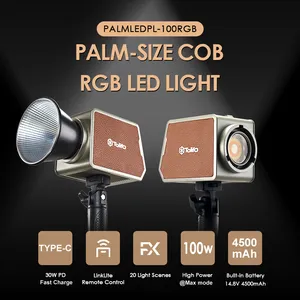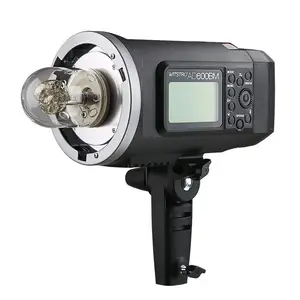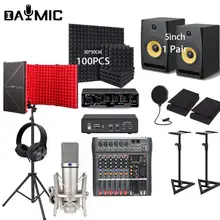What are Photographic Lighting
Photographic lighting is an essential component of photography and videography that involves the use of artificial light sources to illuminate a subject or scene. It is a tool for photographers, videographers, and content creators who aim to capture images with clarity, depth, and dimension. The principles of photographic lighting revolve around controlling and shaping light to achieve the desired artistic or practical effect.
Understanding the behavior of light—how it reflects off surfaces, diffuses through materials, and creates shadows—is fundamental to using photographic lighting effectively. Light can be modified in terms of its intensity, color temperature, direction, and softness to complement the subject matter and convey a specific mood or atmosphere. Photographic lighting enables creators to manipulate these elements, either in a studio setting where they have full control over lighting conditions or in an outdoor setting where natural light may need to be supplemented with artificial sources.
Photographic lighting can range from simple setups with a single light source to complex arrangements involving multiple lights and modifiers like umbrellas, softboxes, reflectors, and gels. Each piece of equipment serves a specific purpose: to diffuse harsh lights, focus brightness on particular areas, or add color accents. These tools help photographers achieve consistency in their work and adapt to various shooting conditions.
Professionals in fields such as portrait photography, product photography, film production, and live streaming all rely on photographic lighting to create high-quality visual content. Whether capturing still images or moving footage, proper lighting is crucial for producing clear and vivid results that meet professional standards.
Types of Photographic Lighting
Photographic lighting can be categorized into several types that cater to different needs and use cases:
Continuous Lighting: This type of lighting provides a constant source of illumination that is helpful for visualizing how light interacts with the subject in real-time. It is commonly used in video production and still photography where the photographer prefers to see the effect of lighting immediately.
Flash/Strobe Lighting: Flash units emit a high-intensity burst of light for a very short duration. They are typically used for still photography, particularly in situations where a powerful light source is needed to freeze motion or fill in shadows under bright ambient conditions.
LED Panels: LED panels offer adjustable brightness and color temperatures, making them versatile for both photography and video work. They are energy-efficient, generate minimal heat, and often come with built-in dimmers for precise control.
Ring Lights: Ring lights provide even, diffused lighting that is perfect for minimizing shadows on the face. This makes them popular amongst beauty vloggers, makeup artists, and portrait photographers.
Monolights: These self-contained flash units have their own power source and do not require an external power pack. Monolights are portable and convenient for location shoots where mobility is key.
Each type of photographic lighting has its own set of applications depending on the creative goals and practical requirements of the shoot.
How to choose Photographic Lighting
Choosing the right photographic lighting depends on various factors including the type of photography or videography being done, location conditions, mobility needs, and budget constraints. Here are some considerations for businesses looking to invest in photographic lighting:
Type of Use: Consider whether the lighting will be used primarily for still photography or video production. Continuous lights are better suited for video while flashes/strobes might be preferred for high-speed photography or when working with fast-moving subjects.
Intensity & Control: Assess the need for variable light intensity and control options like dimming capabilities or remote adjustments. Some situations may require high-output lights whereas others might benefit from more subtle illumination.
Color Temperature: Different shooting environments may call for different color temperatures. LED panels with adjustable color temperature settings offer flexibility when matching ambient light conditions or creating specific moods.
Portability: If the business involves location shooting, lightweight and portable lighting equipment may be necessary. Battery-operated or rechargeable units can provide convenience away from power sources.
Accessories & Modifiers: Determine if there will be a need for additional accessories such as softboxes, grids, barn doors or gels to shape or modify the quality of the light.
By considering these factors in relation to their specific needs, businesses can make informed decisions when selecting photographic lighting equipment that will enhance their creative capabilities and professional offerings.
Best Photographic Lighting on Alibaba.com
Alibaba.com stands as an expansive marketplace connecting businesses with a vast array of photographic lighting solutions tailored to meet diverse professional requirements. With over two decades since its inception in 1999 under the Alibaba Group umbrella, Alibaba.com has grown into a global platform facilitating cross-border wholesale trade in over 190 countries.
The strength of Alibaba.com lies in its vast selection that covers various types of photographic lighting—from advanced LED panels suitable for high-end video productions to portable ring lights ideal for influencers creating content on-the-go. The platform's user-friendly interface allows buyers to filter products based on features like remote control capabilities, water resistance, durability, material construction such as aluminum alloy or ABS plastic; as well as specific applications like outdoor shoots or live streaming setups.
Moreover, Alibaba.com understands the significance of trust in B2B transactions; hence it implements measures like Trade Assurance services which ensure payments are protected until order fulfillment is verified by buyers. This commitment to secure trading fosters confidence among customers who seek quality photographic equipment without compromising on reliability.
Businesses looking to amplify their professional offerings with competitive photographic lighting equipment will find Alibaba.com an invaluable resource—a hub where they can access cutting-edge technology from various suppliers worldwide offering products that cater to an array of professional needs within the visual content creation industry.
Common FAQs for Photographic Lighting
What types of photographic lighting are best for studio photography?
For studio photography, continuous lighting, monolights, and flash/strobe lighting are commonly used. Continuous lighting allows photographers to see the results in real-time, while monolights offer portability and ease of use. Flash/strobe lighting provides powerful bursts of light for capturing sharp images.
How does color temperature affect photographic lighting?
Color temperature impacts the mood and feel of the photograph or video. Different color temperatures can evoke different emotions and are used to match or contrast with ambient lighting conditions. Adjustable color temperature in lighting equipment allows for greater creative control.
What should I consider when choosing between LED panels and ring lights?
LED panels offer adjustable brightness and color temperatures, making them versatile for various scenarios. Ring lights provide even, soft lighting that is ideal for minimizing shadows, particularly in portrait and close-up work. The choice depends on the desired effect and the type of content being created.
Are there portable photographic lighting options suitable for outdoor shoots?
Yes, there are portable options like battery-operated or rechargeable monolights and LED panels that are designed for outdoor shoots. These options provide mobility and flexibility when shooting in locations without access to power outlets.
What accessories might I need with my photographic lighting setup?
Depending on your lighting goals, you might need accessories such as softboxes to diffuse light, barn doors to direct light, grids to focus light, and gels to change the color of the light. Reflectors can also be used to bounce light onto subjects.
How do I ensure consistent lighting across multiple shoots?
To ensure consistent lighting, use a light meter to measure exposure levels and document the settings used for each shoot. Keeping a record of the position and intensity of lights will help replicate the setup in future sessions.
Can I use photographic lighting for live streaming?
Yes, photographic lighting is commonly used in live streaming to ensure a well-lit environment. LED panels and ring lights are popular choices as they provide steady, adjustable illumination that enhances video quality.
What features should I look for in photographic lighting for product photography?
For product photography, look for features like high CRI (Color Rendering Index) to ensure accurate color representation, adjustable intensity for controlling highlights and shadows, and a variety of modifiers to shape the light around objects.
How do I manage heat output from continuous photographic lighting?
LED-based continuous lights generate less heat compared to traditional tungsten or halogen lights. If heat management is a concern, opt for LED lights or ensure adequate ventilation and cooling in your studio space.
What is the advantage of using dimmable photographic lights?
Dimmable lights offer flexibility in controlling light intensity which is crucial for achieving the right exposure and contrast in your images or videos. It allows you to fine-tune the lighting according to your creative needs without moving the light sources.
How does remote control functionality benefit photographic lighting setups?
Remote control functionality allows you to adjust lighting settings like intensity and color temperature from a distance without having to physically interact with the lights. This can be especially useful when lights are positioned out of reach or if you want to make quick adjustments while looking through the camera.
Why would I choose waterproof photographic lighting?
Waterproof photographic lighting is essential for shoots that involve water scenes or unpredictable weather conditions outdoors. It provides protection against damage from moisture and allows you to shoot with confidence in various environments.
What is the significance of having high CRI in photographic lighting?
High CRI (Color Rendering Index) indicates that a light source accurately reproduces colors as they would appear under natural light. This is particularly important in photography where color fidelity is essential such as in fashion, food, or art photography.
How does beam angle affect my choice of photographic lighting?
The beam angle determines how wide or narrow the spread of light will be from a particular source. A wider beam angle is useful for covering large areas evenly, while a narrower beam angle focuses light on a specific area or subject.













































 浙公网安备 33010002000092号
浙公网安备 33010002000092号 浙B2-20120091-4
浙B2-20120091-4